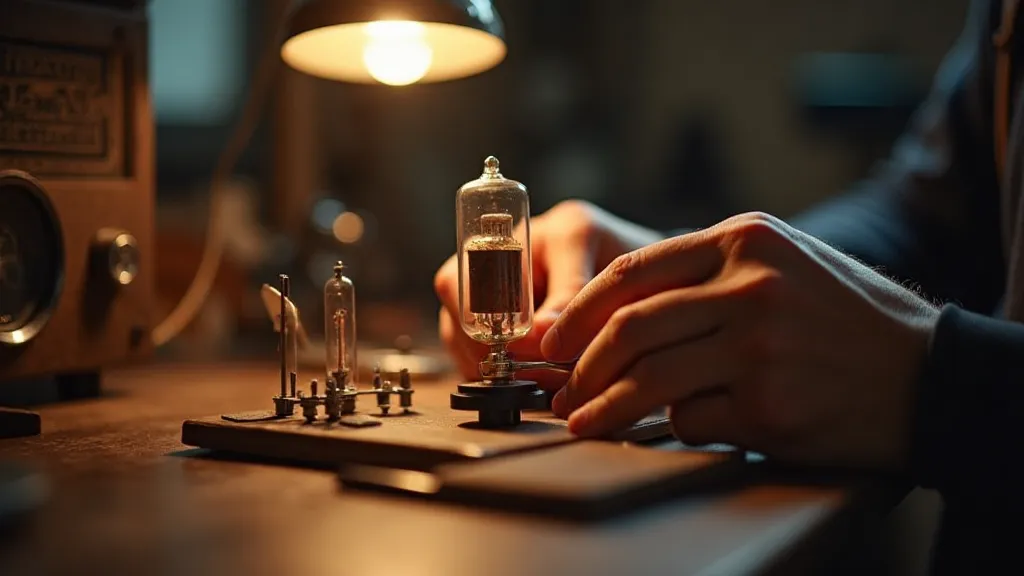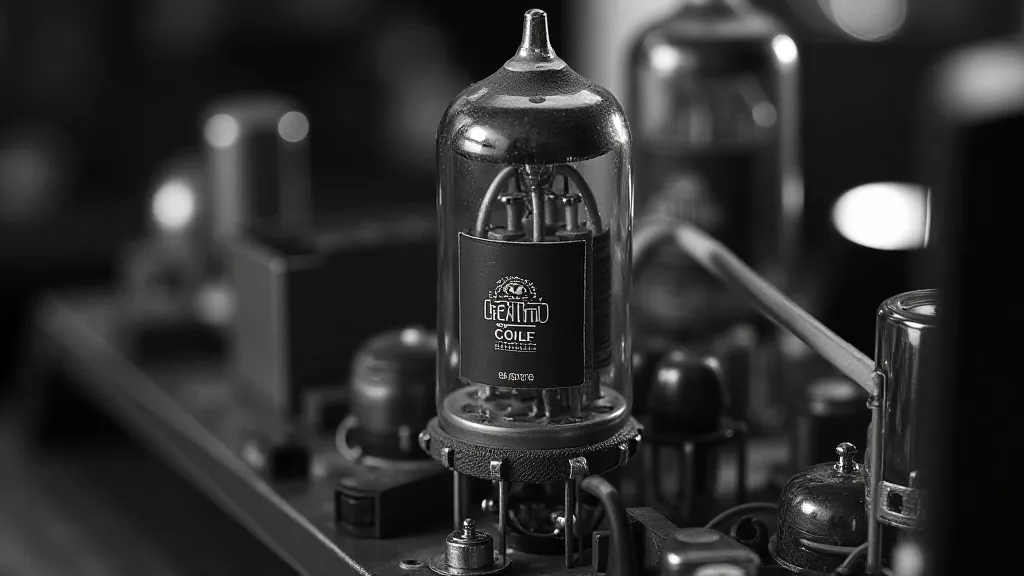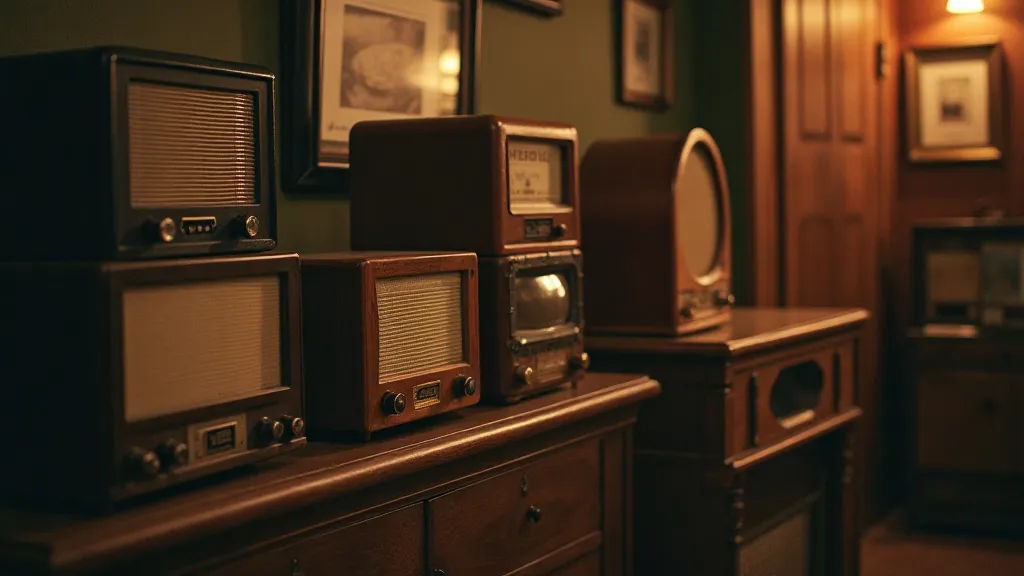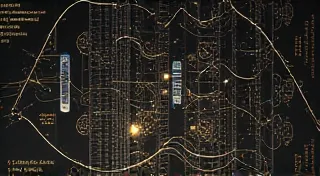The Lexicon of Loss: Common Radio Terminology – Then and Now
There’s a peculiar melancholy that clings to antique radios. It’s not just the patina of age, the faded paint, or the delicate fragility of vacuum tubes. It’s the echo of voices long gone, of news broadcasts delivering a world vastly different from our own, and of a culture bound together by the shared experience of listening. To truly appreciate these remarkable machines, and to embark on the rewarding journey of radio restoration, it’s surprisingly helpful to understand the language of their time – a language that often feels lost, a "lexicon of loss" as I sometimes think of it.
I remember my grandfather, a quiet man with hands calloused from years of carpentry, patiently explaining to me the inner workings of his prized Philco from the 1930s. He wasn’t an engineer, but he understood the radio, and he possessed a deep respect for the ingenuity that went into its creation. He’s gone now, but his voice – and the technical jargon he used – resonate in my memory, often prompting me to pause and consider how radically our understanding of electronics has evolved.

The Dawn of Wireless: Early Radio Terms
Early radio enthusiasts weren’t using the precise, technical language we’re accustomed to today. Terms were often fluid, descriptive, and sometimes rooted in the era's broader technological understanding. For example, what we now call a "frequency" was often referred to as the "wave length." It was understood that longer waves carried the signals, and shorter ones, well, those were newer and a bit mysterious. Broadcasting wasn't simply “broadcasting” – it was “transmitting,” a more literal description of sending out a signal.
The concept of amplification was particularly interesting. The term "gain" didn't exist in its modern sense. Instead, a radio’s ability to make a signal louder might be described as having "strength" or being "powerful." Think about it – the radio was effectively giving the signal *more* strength. This language emphasized the perceived magic of the technology; it wasn't just processing signals, it was bestowing power upon them.
Consider the vacuum tube itself. Instead of "vacuum tube," you might hear phrases like "electron tube" or simply "tube.” Each tube, with its specific function – the rectifier, the oscillator, the detector – was a marvel. A "regenerative circuit," a popular design for early radios, wasn't just a circuit; it was a technique often touted for its ability to “regenerate” the signal, implying a process of renewal and enhanced clarity. This poetic language reflected the wonder of bringing voices from across the country—or even the globe—into one's home.
Detectors, Oscillators, and "Tickler" Coils
Let's delve into some specifics. The "detector," the crucial component responsible for extracting the audio signal from the radio wave, often evoked the image of something actively searching and isolating. Nowadays, we understand it's a diode-based circuit. But the language hinted at a more purposeful function. Early detectors were often crystal detectors, which utilized the unique properties of certain crystals to rectify the radio frequency signal. These crystals were precious, treated with reverence, and often possessed quirks that influenced the radio’s performance.
The “oscillator” wasn't just oscillating – it was generating “carrier waves.” These waves acted as the vehicle for transporting the audio signal. Understanding that this carrier wave was a blank slate, upon which information was imprinted, is key to grasping the underlying principles. And then there’s the "tickler coil," a curious and often perplexing component in early regenerative radios. A tickler coil was a small inductor wired in parallel with the detector circuit, used to provide feedback and boost signal strength. The term itself – "tickler" – is oddly charming, suggesting a gentle nudge or adjustment to coax the radio into working properly.

From "Resistance" to "Impedance": Evolving Concepts
As electronics matured, so did the vocabulary. Early descriptions of electrical properties were often qualitative. Resistance was simply “high” or “low.” Today, we speak of impedance, a more complex concept that combines resistance and reactance. The shift isn't just about precision; it reflects a deepening understanding of the physics involved.
The evolution of terminology also mirrors the advancements in technology. The transition from mechanical tuning, where users manually adjusted variable capacitors, to electronic tuning, using transistors and integrated circuits, fundamentally altered the radio's architecture and, subsequently, its language. Phrases like “bandspread tuning” replaced simpler descriptions of frequency selection.
The Collector’s Perspective: A Connection to the Past
For those of us drawn to restoring antique radios, understanding this historical vocabulary isn’t just an academic exercise. It’s a vital link to the past, a way to connect with the craftsmen and enthusiasts who first brought these marvels into being. Deciphering a schematic from the 1930s, filled with these antiquated terms, becomes a rewarding challenge – a detective story uncovering the secrets of a bygone era.
It allows us to appreciate the ingenuity and resourcefulness of early radio engineers, who, with limited tools and knowledge, managed to create machines that revolutionized communication and entertainment. The "lexicon of loss" isn’t about something disappearing; it’s about preserving a legacy—a testament to human creativity and the enduring power of radio.

Restoring More Than Just Hardware
Ultimately, restoring an antique radio isn’t just about replacing faulty components or cleaning up the cabinet. It’s about restoring a piece of history, a window into a different time. It’s about understanding the language of that time, the hopes and dreams that were carried on those radio waves, and the voices that once filled our homes. The "lexicon of loss" reminds us to listen not just to the signals, but to the stories they tell.




